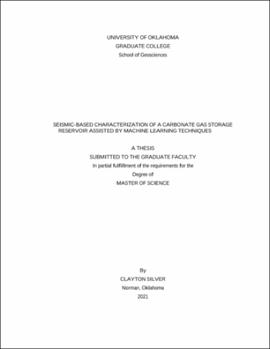| dc.description.abstract | Silurian pinnacle reefs found within the Michigan Basin were prolific hydrocarbon producers in the mid-to-late twentieth century. During production, studies over these complex reservoirs were primarily focused on facies distributions and depositional environments interpreted from core and petrophysical log data. 2-D seismic was applied primarily for reef identification, and rarely incorporated in identifying facies. To date, only two studies using modern 3-D seismic data to characterize Silurian pinnacle reefs have been published (Toelle and Ganshin, 2018; Buist 2020). Toelle and Ganshin (2018) had poor well control, which significantly reduced the certainty of interpretations made. Buist (2020) utilized unsupervised Self-Organizing Maps for porosity and permeability correlation from seismic data in several reefs along the Southern Reef Trend. This study is the first to conduct a pre-stack seismic inversion over a Silurian pinnacle reef within the Michigan Basin, and both the pre-stack inversion volumes and post-stack seismic attributes are integrated with supervised and unsupervised machine learning techniques (Probability Neural Networks and Generative Topographic Maps) to characterize the reservoir properties of Ray Reef field along the Southern Reef Trend.
The workflow for this study begins with the well log data. A feasibility study is conducted to analyze relationships between elastic properties such as velocities and impedances, and reservoir properties such as porosity and lithology. Simultaneous pre-stack inversion is then conducted to provide P and S-impedance volumes, velocity cubes, and lambda-rho mu-rho volumes. Attributes are generated on the post-stack data as well, and input into the Generative Topographic Map (GTM) algorithm. The GTM is able to identify non-linear relationships between the attributes, and identifies relationships between lithology and seismic attributes. Pre-stack inversion attributes are analyzed in traditional crossplots to classify zones of good, fair, and poor porosity. Probability Neural Networks (PNNs) are shown to excel at classifying the gas-water contact within the reservoir, in addition to delineating salt units from the encasing carbonate units.
The workflow described in this study identified a consistent relationship between lambda-rho and mu-rho attributes for porosity and possible fluid content within the Ray Reef gas storage reservoir in southeastern Michigan. Unsupervised machine learning techniques used also showed the ability to identify the reef core lithofacies from post-stack seismic data. These workflows have the potential to be applied on other pinnacle reef complexes within the Michigan Basin in addition to other carbonate reservoirs around the world. | en_US |
